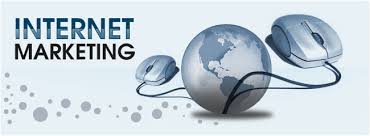




Delegating:
Learn how to choose what to delegate, match employee and delegated assignment, and set the stage for success by both developing your employees and freeing up your time for critical managerial tasks.
Goal Setting:
Learn how to set realistic goals, prioritize tasks, and track milestones to improve performance and morale.
Managing Upward:
Learn insight into developing a mutually rewarding relationship, with skills for communicating and negotiating with your manager, presenting problems or opportunities to your supervisor and accepting responsibility for your proposed actions.
Meeting Management:
Learn about planning and conducting meetings from start to finish; preparation, keeping the meeting on track, and follow-up and dealing with problem behaviors exhibited by meeting participants.
New Manager Transitions:
Learn what it means to be a manager, as well as how to navigate the complex and often stressful transition from individual contributor to a new manager.
Presentation Skills:
Learn about preparing and delivering presentations that command attention, persuade, and inspire, rehearsal techniques, creating and using more effective visuals, understanding your objectives and your audience to create a presentation with impact.
Stress Management:
Learn the difference between positive stress that enhances productivity and negative stress that breeds tension, lowers productivity, and undercuts job satisfaction, strategies for dealing with underlying causes of worry and stress, tactical coping mechanisms for immediate problem management.
Time Management:
Learn how to analyze how you currently spend your time and pinpoint opportunities for improvement, set goals, prioritize tasks, plan your time efficiently using scheduling tools, control time-wasters, and evaluate your schedule once it is underway.
Writing Skills:
Learn how to accomplish your business objectives and extends your influence as a manager, create clearer, more effective written communications, guidelines for preparing memos, letters, emails, and other common business documents.
Career Management:
Learn how to manage your career–including how to identify your business interests, professional values, and skills in order to target your most exciting career possibilities.
Change Management:
Learn how to manage change constructively and navigate the ups and downs that inevitably accompany a change effort.
Coaching:
Learn how to strengthen your coaching skills to facilitate the professional growth of the employees you coach.
Developing Employees:
Learn how to encourage your employees to learn and grow, while maximizing the return on the management time you invest in employee development.
Difficult Interactions:
Learn how to discuss and resolve difficult interactions in the workplace–whether with employees, peers, bosses, or even suppliers and customers.
Feedback Essentials:
Learn when and how to give effective positive or corrective feedback, how to offer feedback upward, and how to receive feedback.
Global Collaboration:
Learn critical skills required to manage a cross-cultural collaboration, including negotiating, building trust, overcoming language barriers, and navigating the geographical and technological challenges of working across continents.
Hiring:
Learn how to identify the particular skill set needed for a job, and then how to research and interview leading candidates until you find the one who best fills your need.
Leading and Motivating:
Learn about the essential tasks of leadership: setting direction, aligning people, and motivating others. Learn how to recognize the skills and characteristics of effective leaders, create an inspiring vision, and energize people to support and work toward your goals.
Performance Appraisal:
Learn how to prepare for, conduct, and follow up on performance evaluations–in ways that link employee performance to your company’s and group’s goals.
Retaining Employees:
Learn strategies for attracting and keeping top performers, how to handle common obstacles to retention such as burnout and work/life imbalance, and how to develop programs that address the diverse needs and interests of your workforces
Team Leadership:
Learn how to establish a team with the right mix of skills and personalities and create a culture that promotes collaborative work, steps to leading an effective team and includes innovative, easy-to-implement self-evaluation tools.
Team Management:
Learn how to diagnose and overcome common problems – such as poor communication and interpersonal conflict – that can impede team progress, learn to take corrective measures to remove team problems and improve team performance.
Virtual Teams:
Learn how to create concrete suggestions for forming virtual teams, including assessing their technology and communication needs, structuring the team to build trust, and keeping the team on track.
Budgeting:
Learn about the budget process, different types of budgets, and common budgeting problems–so you can allocate resources wisely to meet your goals.
Business Case Development:
Learn how to create an effective business case, from defining the opportunity and analyzing alternatives to presenting your final recommendations.
Business Plan Development:
Learn the process of preparing an effective plan for a business proposal, applicable to launching a new internal product as well as seeking funding for a new start-up business.
Crisis Management:
Learn a practical, hands-on method for looking at crises–from developing a crises audit to avoid and prepare for crises, to managing an actual crisis, to learning from past events.
Customer Focus:
Learn how to target the right customers and build their long-term loyalty by developing systems for learning about–and responding to–their needs.
Decision Making:
Learn how to identify underlying issues related to a decision, generate and evaluate multiple alternatives, and then communicate and implement your decision.
Diversity:
Learn how to manage diversity to extract maximum value from your employees’ differences — including how to recruit diverse talent, resolve diversity-related conflicts, and communicate with employees and customers from other cultures.
Ethics at Work:
Learn how to identify and execute sound choices based on ethical standards and how building a culture of integrity and cultivating an environment of trust among employees, customers, and other stakeholders lays a foundation for sustained success.
Finance Essentials:
Learn the essential concepts of finance–budgeting, forecasting, and planning, for managers who are not financial managers.
Innovation and Creativity:
Learn how to manage an intellectually diverse work group and their environment to produce more–and better–ideas that encourage innovation when developing products and work processes.
Innovation Implementation:
Learn how to implement an innovation from crafting a vision statement to gaining support and managing resistance and turn an idea into reality.
Marketing Essentials:
Learn the fundamentals that will help you better understand the importance of marketing and how it relates to you, especially for non-marketing managers.
Negotiating:
Learn how to become an effective negotiator, the negotiation process: assessing your interests as well as those of the other party, developing opportunities that create value, avoiding common barriers to agreement, and implementing strategies to make the negotiation process run smoothly.
Performance Measurement:
Learn how to review financial and non-financial measures used in all areas of organizational performance, addresses both standalone measures (including ROI, EVA, and BET) and measurement frameworks such as dashboards, quality models, and the Balanced Scorecard, systematic processes for tracking performance of initiatives.
Persuading Others:
Learn the art and science behind successful persuasion, changing others’ attitudes, beliefs, or behavior to create win-win solutions, accomplishing work through others rather than simply issue orders.
Process Improvement:
Learn what business processes are; why improving them is essential; and how to carry out a business process improvement BPI) initiative.
Project Management:
Learn the nuts and bolts of project management, including project planning, budgeting, team-building, execution, and risk analysis, useful tools and techniques such as GANTT and PERT charts, Work Breakdown Structure, and variance analysis.
Strategic Thinking:
Learn how to shape and execute organizational strategy, analyzing opportunities, challenges, and the potential consequences of high-level action plans, addresses identification of broad patterns and trends, creative thinking, analysis of complex information, and prioritization of actions
















